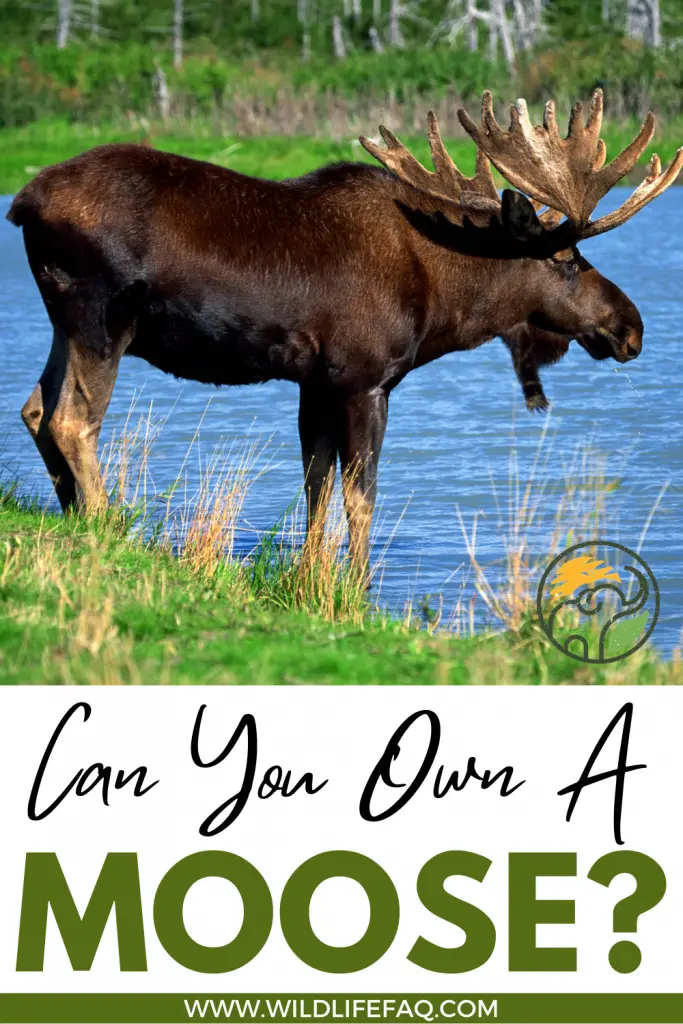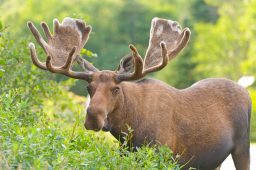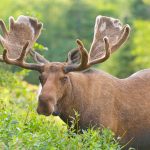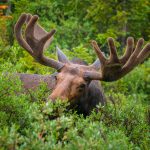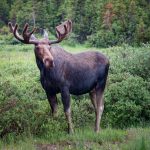Yes, some places you can own moose it depends on where you live – but they aren’t something you can put in the backyard. They eat 10,000 calories a day too – so plan ahead!
Can You Own A Moose, Or Meese?
Surprisingly, in the right place, you can own a moose and keep them all to yourself. Who would have thought that could happen?
However, they aren’t like buying a pony or a llama. You certainly can’t just buy one or two at the market. In some places you can’t even consider one as a private purchase – and some would wonder why on Earth you would want to even if you could? So if you live in Alaska you can get a permit for a moose – but in Maine – no chance.
They are massive in size, incredibly strong, belligerent, and able to kick out around 3ft in every direction with their incredibly sharp hooves without actually moving.
Moose attack more people than bears in the U.S. and are only second behind hippos as the most dangerous animal on the entire planet. Not something most people would want living next door.
Unless you are a sanctuary, zoo, or educational organization – and have a good few acres of prime moose habitat – there is very little chance of you getting any moose privately – but if you are determined and have the space – there are ways around it.
And just out of interest – it is moose. The plural of moose is meese.
What Do Moose Eat?
Moose got their name from the local traditional Algonquian language meaning ‘he who strips’ referring to the moose’s habit of stripping bark off trees and eating shrubs.
They are known as browsing herbivores – meaning that they get their food from plant material above ground level rather than grazing it flat off the ground.
Their favorite foods include willow and birch bark and twigs as well as herbaceous flowering plants. They also eat up to 50% of their diet straight from the water – feasting on aquatic plants throughout the year when they can.
They can browse all day in the cooler weather but usually, avoid the heat of the day in the summer.
Chewing their way through up to 30kg (66lbs) of food a day – they can really clear an area once they find something they like. They have a very prehensile top lip for gathering and rooting up plants and flowers as well as pulling off leaves from part-trampled saplings and small trees.
They are also known to stand up on their hind legs, like goats, to reach tender leaves high up on larger trees – sometimes standing over 4.2m (14ft) tall for short periods.
Moose have adapted to a very specialist herbivorous diet – not just ‘plants’ and so keeping them in captivity is incredibly difficult.
Matching up the nutrients and fiber content in pre-made foods has never been sufficient enough to keep them in perfect health.
Pre-made foods today are better than in the past – but even fencing in several acres of land might not actually contain the right balance of plants they need through the entire year to keep them healthy and in good shape.
Unfortunately, with moose it isn’t just about what they eat – it is how they eat it. Chewing it and digesting it is what makes all the insides work. Needless to say, this is one of the main reasons why moose have never yet been domesticated or farmed on a large scale.
How Would You Train A Moose?
Surprisingly, moose are very intelligent creatures and in the right circumstances have been trained to do various tasks and behaviors.
There are many stories across North America as well as Europe where moose had been trained to wear a harness and pull small carts. They were fed and cared for by humans, usually from a very young age, and so we’re much more pliable than wild-caught adults.
However, in most cases either the animals died through poor nutrition or they became lost to history after the novelty wore off (or more likely they became too unruly and dangerous after reaching maturity).
There has been talked of a moose-mounted cavalry, a moose long-distance postal system, and many moose farms – but the animals were not adaptable to human conventions and most projects would not break even – or be healthy for the moose themselves.
Are Moose More Likely to Attack Humans if They Are Owned as Pets?
Moose-human interactions can become dangerous when moose are owned as pets. Moose, although majestic, are large and powerful animals with unpredictable behavior. Keeping them as pets can lead to increased chances of aggression towards humans. It is imperative to understand the potential risks involved and prioritize safety when considering such ownership.
Can You Farm Moose Like Cattle?
At least one moose research facility in Russia however, lasted several decades (from the late 1940s) looking to find out more about the possibilities of working with and farming moose.
They sold the milk, experimented with diets and health-related projects as well as other husbandry techniques, and were still open as late as the early ’00s.
Moose still aren’t farmed on a wide scale in any country today but much has been learned about moose in general – and other farms have taken up the challenge of keeping moose as livestock.
